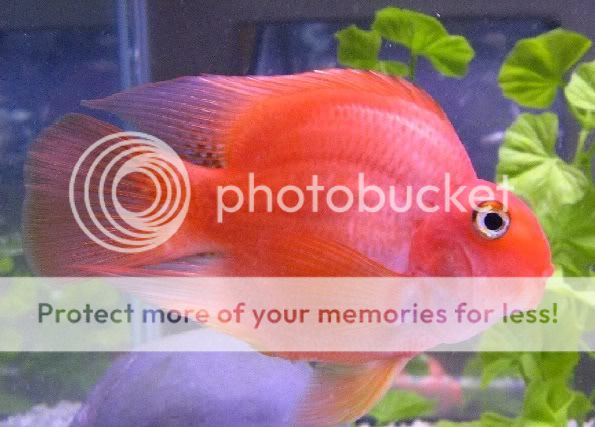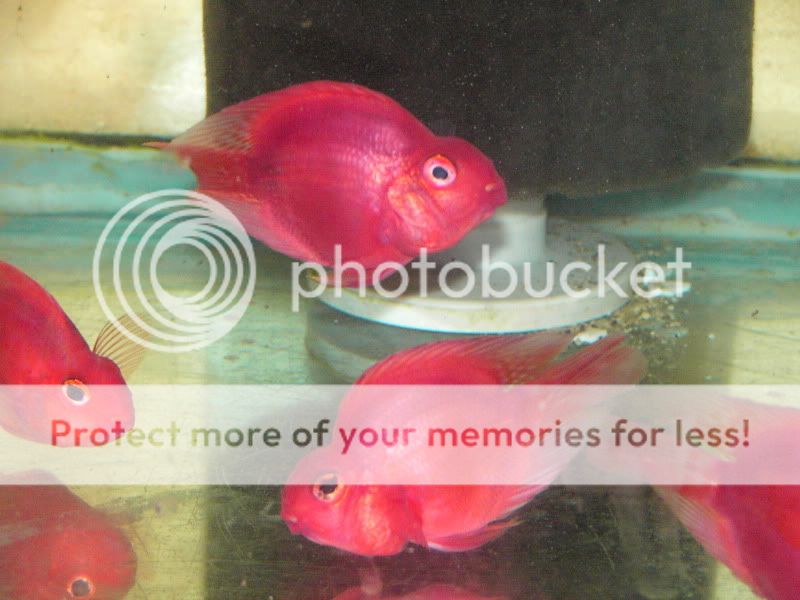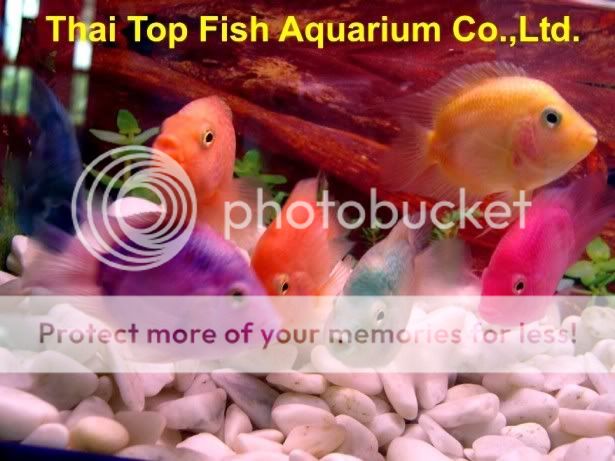Parrot Identification
Blood Parrots: Blood Parrots have a round body, a protruding beak like head, and an odd shaped mouth that does not close. These are the most common available. They are seen in orange, yellow-orange, and red-orange.

Low Quality Blood Parrots: Recently there has been lots of low quality Blood Parrots showing up in the market at stores like Petco, Petsmart, Walmart, and some local stores at significantly lower prices than they are typically seen. These Parrots are low quality in the way the ideal Blood Parrot should look like. These low quality parrots are being mistaken as King Kong Parrots because they posses normal closing mouths rather than the upside down triangle mouth and they do not posses the hump like body.

King Kong Parrots: King Kong Parrots are a different breed of Parrot. They typically have a more oval shaped body, less protruding head, and they have normal closing mouth. They can grow larger than Blood Parrots, usually 7 - 10", and are typically more aggressive. They are seen in orange and red-orange.

Dyed Blood Parrots: These are often called Jellybean or Bubblegum Parrots, but are just dyed Blood Parrots. They are also confused as being a hybrid of Blood Parrot and Pink Convict which is not the case. These fish should be avoided when purchasing.


Dyed/Undyed Shortbody Pink Convicts: These are usually called Jellybean Parrots but they do not have any Blood Parrot DNA in them. They are just shortbody or sometimes normal bodied Pink Convicts. They are usually dyed but can be found undyed. If they are dyed they should be avoided.

http://www.****************/images_01/dwarf_jellybean_convict.jpg
Kilin Parrots: Sometimes called Kilin Parrot, Kirin Parrot, or Flowerhorn Parrot are a hybrid between Blood Parrots and Flowerhorn. They have the body shape and mouth of a Blood Parrot and the body color and markings of a Flowerhorn.


Blood Parrots: Blood Parrots have a round body, a protruding beak like head, and an odd shaped mouth that does not close. These are the most common available. They are seen in orange, yellow-orange, and red-orange.

Low Quality Blood Parrots: Recently there has been lots of low quality Blood Parrots showing up in the market at stores like Petco, Petsmart, Walmart, and some local stores at significantly lower prices than they are typically seen. These Parrots are low quality in the way the ideal Blood Parrot should look like. These low quality parrots are being mistaken as King Kong Parrots because they posses normal closing mouths rather than the upside down triangle mouth and they do not posses the hump like body.
King Kong Parrots: King Kong Parrots are a different breed of Parrot. They typically have a more oval shaped body, less protruding head, and they have normal closing mouth. They can grow larger than Blood Parrots, usually 7 - 10", and are typically more aggressive. They are seen in orange and red-orange.

Dyed Blood Parrots: These are often called Jellybean or Bubblegum Parrots, but are just dyed Blood Parrots. They are also confused as being a hybrid of Blood Parrot and Pink Convict which is not the case. These fish should be avoided when purchasing.


Dyed/Undyed Shortbody Pink Convicts: These are usually called Jellybean Parrots but they do not have any Blood Parrot DNA in them. They are just shortbody or sometimes normal bodied Pink Convicts. They are usually dyed but can be found undyed. If they are dyed they should be avoided.

http://www.****************/images_01/dwarf_jellybean_convict.jpg
Kilin Parrots: Sometimes called Kilin Parrot, Kirin Parrot, or Flowerhorn Parrot are a hybrid between Blood Parrots and Flowerhorn. They have the body shape and mouth of a Blood Parrot and the body color and markings of a Flowerhorn.




